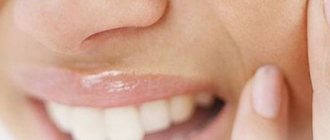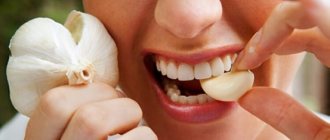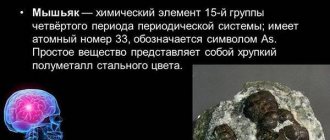This state cannot be called merely unpleasant or uncomfortable. Pulsating pain in a tooth can not only reduce a person’s quality of life - because of it, he may temporarily lose the ability to work normally, sleep, eat, etc. Dentists at the CrystalDent clinic urge all patients who are faced with this problem not to endure this condition in the expectation that it will go away on its own. The specialist strongly recommends immediately seeking help from a doctor and talks about the nature, causes, and methods of dealing with this problem.
Causes of throbbing tooth pain
It causes a feeling that at the site of its source someone or something is purposefully and monotonously hitting the nerve endings, tugging at them, causing them and the patient himself to shudder. This is approximately true, since it occurs due to mechanical irritation of a nerve bundle exposed for some reason, located in the soft tissues (pulp) of the tooth.
Throbbing pain can be either constant or occur periodically - when closing teeth, brushing them, touching them, eating, exposure to heat or cold, or any mechanical stress. It can last for several seconds or several hours, and in some cases it practically does not subside at all. In any case, this is a signal that urgent medical attention is required.
This, to put it mildly, unpleasant sensation may appear for the following reasons:
- Caries. This is one of the most common provocateurs of pain of this nature. When it occurs at an early stage, they can be almost imperceptible and short-lived. But as the problem progresses, they intensify, since the hard tissues that protect the pulp from external influences are gradually destroyed;
- Pulpitis. This pathology is a consequence of the destruction of hard dental tissues, which exposes the nerve of the tooth. Most often, this inflammatory process develops as a result of deep caries that has reached the final stages. With pulpitis, the patient feels severe throbbing pain in the tooth, which can radiate to the ear, temple, and even to the neck, eyes, and nose. It can make itself felt either periodically or not recede for a long time;
- Thinning, damage to tooth enamel. In such cases, a reaction of the nerve bundle to external stimuli is also possible;
- Mechanical damage to the tooth due to trauma. If, as a result of the latter, the hard tissues protecting the pulp are destroyed, it becomes exposed, and therefore reacts to any external influence;
- Periodontitis. This disease is an inflammatory process that occurs in the tissues around the apex of the tooth. In this case, the throbbing pain may intensify when touching not only the patient himself, but also the gum, which may also be inflamed;
- Periodontitis. With this pathology, inflammation develops in bone tissue, and, as a rule, this is a consequence of their infection;
- Incorrectly installed filling or insufficient treatment. Patients often complain that throbbing pain appears after filling, and in such cases the reasons may be different. For example, under a temporary filling it may appear due to the effect of a drug that kills the nerve that needs to be removed, and this option is normal. Once treatment is completed and a permanent filling is installed, this problem usually goes away. At the same time, during the treatment process, the doctor must be sure that pain is not a consequence of insufficient treatment. But there are also situations when throbbing pain appears even after the end of treatment. This may also be a variant of the norm - the injured tissues are still healing, and after a few days the discomfort will subside. If this does not happen, it is possible that the tooth was treated poorly (for example, the nerve was not completely removed or the pulp was injured by mechanical forces). It is also possible that a permanent filling is installed incorrectly, which literally puts pressure on the nerve bundle. In both of the latter cases, re-treatment and/or re-filling should be performed.
The problem can also appear after tooth extraction, and in some cases it signals infection of the hole that remains after it.
There are also situations when it is difficult for the patient to determine the localization of these sensations. To accurately establish it, sometimes an in-person examination by a doctor is not enough, but an x-ray will help do this.
First aid for throbbing tooth pain
These sensations are sometimes unbearable, and in order to calm them down a little, various painkillers are used.
The following medications can be used:
- Nonsteroidal anti-inflammatory drugs (NSAIDs). Such medications can relieve pain for several hours. In addition, they have anti-inflammatory effects. The most effective painkillers in this category are Ibuprofen, Ketanov, Ketorolac, Ketorol;
- Derivatives of phenylacetic acid. These drugs have not only analgesic, but also anti-inflammatory effects. Their most popular and effective representatives are “Aceclofenac”, “Diclofenac”;
- Such remedies as “Indomethacin”, “Nise” also help to temporarily eliminate throbbing toothache;
- If the sensations are not too pronounced, Paracetamol, Aspirin, and Analgin will help temporarily numb the tooth.
There are also folk remedies that help relieve pain for a short time:
- Ice. It is wrapped in cloth or gauze and applied to the cheek;
- Rinse with soda solution. To prepare it, 1 tsp. soda is dissolved in a glass of warm (but not hot) water, and the resulting composition is rinsed in the mouth. You can add a little iodine (a couple of drops) and salt to the solution;
- Rinse with sage decoction. It is prepared by pouring boiling water (1 cup) over the herb (0.5 tsp), and then sending the mixture to a steam bath for a third of an hour. When the broth has cooled (but it should not become cold), it is decanted and used for rinsing.
Using any methods of pain relief, first of all, you need to carefully clean the oral cavity and the diseased tooth itself from plaque, using toothpaste and a brush.
It is very important to consider the following points:
- The use of painkillers is not a treatment, but only a temporary elimination of symptoms to alleviate the patient’s condition before his visit to the dentist;
- The given examples of drugs and traditional methods are not universal and guaranteed to be effective. In some cases, using any of them can even be harmful. Be sure to contact your doctor to see what steps you can take to relieve your condition. Only a doctor can determine the means that will help do this in each specific case.
Some patients, feeling that the pain has subsided, believe that the problem has passed. This is a big misconception! Eliminating symptoms does not eliminate the disease, so a visit to the dentist is inevitable if you do not want to allow the pathology to rapidly progress and lead to more serious consequences.
What you can do yourself
If a toothache suddenly appears, you should:
- apply a cold compress to the cheek on the sore side; heat treatment is contraindicated, as this increases blood circulation and leads to the spread of infection;
- examine your teeth, identify possible food debris, remove them and rinse your mouth with a warm solution and soda;
- take a pain reliever (Ketanov, Diclofenac, Solpadeine);
- Visit your dentist as soon as possible for an x-ray.
Note! Dentists recommend using Nimesil powder to quickly relieve pain.
Photo 2: After a dental examination, the doctor will carry out professional hygiene and sanitation of the oral cavity, after which the dentist will prescribe medications. Source: flickr (Aviel Stankevitch).
Professional treatment
Its tactics and volume are determined by the doctor, and it depends on the causes of the problem and the condition of the diseased tooth. After an in-person examination, if necessary, the specialist sends the patient for an x-ray in order to accurately determine the location of the lesion and examine the condition of the root and dental tissues.
Based on a preliminary study, the following assistance can be provided to the patient:
- Treatment of caries;
- Depulpation of the tooth with treatment and subsequent filling of the dental canals;
- If its tissues are severely damaged, it may be necessary to install a crown or other types of prostheses (for example, veneers, lumineers);
- If the cause of the pain lies in a root disease, if possible, it is treated by opening the canals. It is possible that resection of its apex will be required to eliminate the source of inflammation and preserve the tooth;
- In some cases, it is not possible to avoid completely removing the latter.
If discomfort occurs after filling, and the reason lies in improper treatment, the filling is opened, the canals are treated, if necessary, and then the filling is repeated.
Prevention
No one is immune from diseases and the discomfort associated with them, but measures can be taken to reduce the risk of encountering them. In the case of dental problems, including throbbing pain in the tooth, they are as follows:
- Inspect your mouth regularly to detect early caries early. If you notice it, contact your doctor immediately to get it eliminated as quickly as possible. At the initial stages of its development, it is possible not only to preserve the tooth, but also the nerve in it, which means that it will remain “alive” and will last for many years;
- Regularly visit the dentist - he will see with a professional eye possible problems that the patient himself did not notice, and immediately begin treatment;
- Strictly adhere to the rules of oral hygiene - you need to brush your teeth twice a day, doing it thoroughly and for at least 2-3 minutes. After eating, use dental floss and special rinses;
- Don't skip professional oral cleaning. With its help, it is possible to remove plaque that a regular toothbrush cannot cope with. It often becomes the cause of the development of caries, other dental problems and all their negative consequences;
- As soon as pain makes itself felt, do not delay in seeing a doctor. They are always a “bell” that a pathology is developing, but it will not go away on its own, and without the help of a specialist it will only get worse.
The dentists of the CrystalDent clinic draw the attention of patients to the fact that it is very important to find an experienced, responsible doctor who can provide professional assistance to the required extent, and not only quickly relieve pain, but also save the tooth, do everything to ensure that it served for many more years.
Kostyuk Anna Vladimirovna
Orthopedic dentist of the first category
Did you like the article?
Rate: (no rating)
Loading…
Tests required to make a diagnosis
In order to prescribe adequate treatment, a specialist must conduct a standard diagnostic examination of the patient and exclude the possibility of toothache due to a number of related diseases.
Mandatory list of procedures:
- examination by a dentist, a special mirror and probe will allow you to find defects in teeth eaten away by caries;
- cold test shows hypersensitivity;
- X-ray examination checks the structure of the tooth from the inside;
- radiovisiography is a type of modern radiography with a lower radiation dose to the human body;
- The caries detector will help identify caries, since it colors the diseased areas, and the photopolymerizer also illuminates the incipient caries;
- examination by an otolaryngologist and other specialists to exclude tumor changes in the jaw using computed tomography of the maxillary part of the skull;
- sinus puncture eliminates the possibility of sinusitis.










